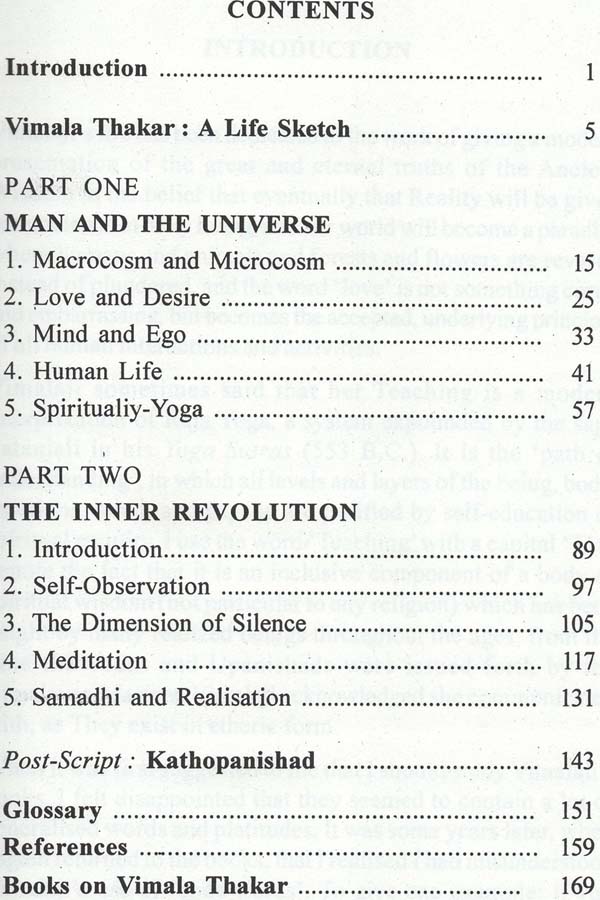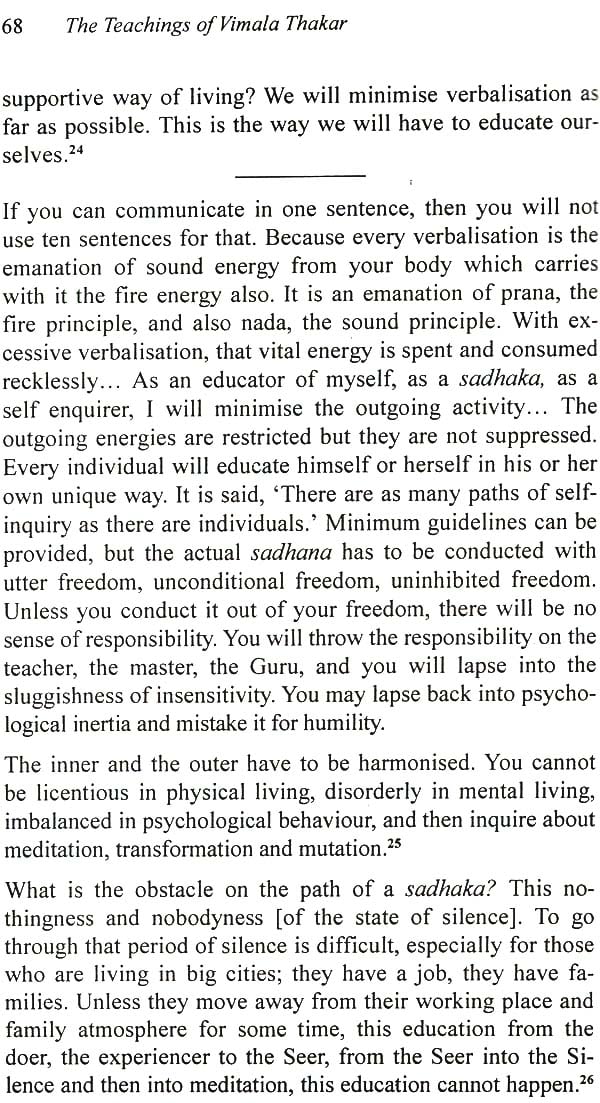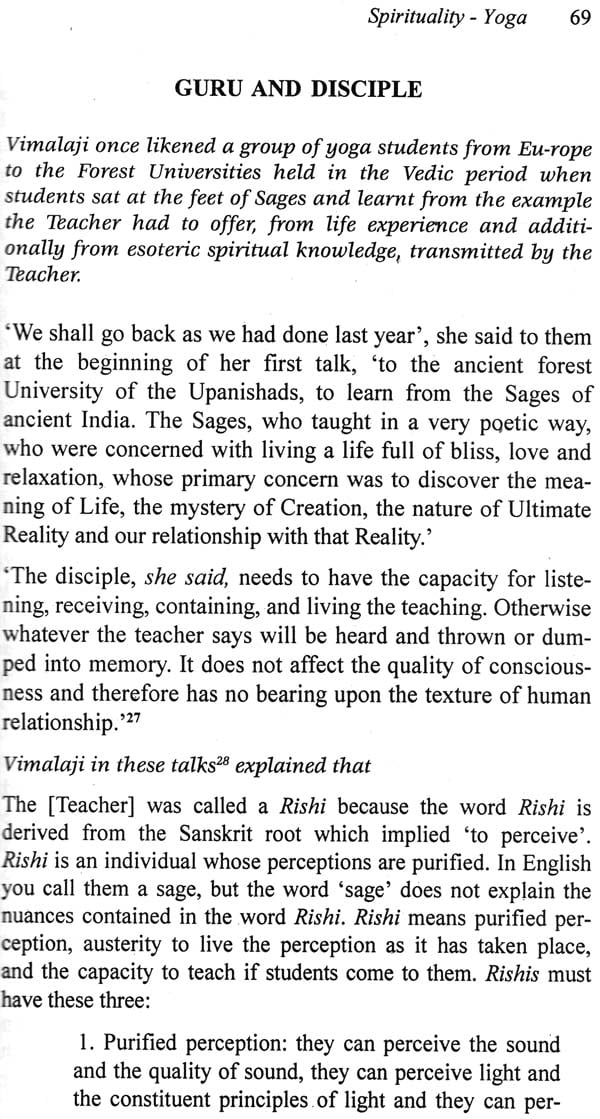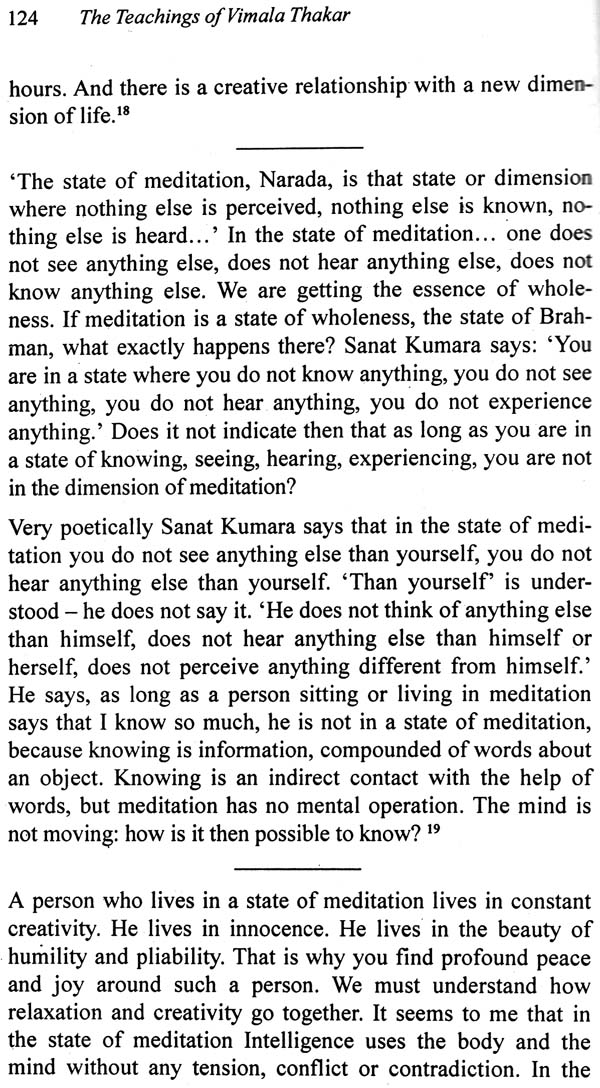
The Teachings of Vimala Thakar
Book Specification
| Item Code: | NAQ762 |
| Author: | Christine Townend |
| Publisher: | Motilal Banarsidass Publishers Pvt. Ltd. |
| Language: | English |
| Edition: | 2010 |
| ISBN: | 9788120833357 |
| Pages: | 171 |
| Cover: | PAPERBACK |
| Other Details | 8.50 X 5.50 inch |
| Weight | 260 gm |
Book Description
Most of the early Tibetan literature was derived from ancientIndian Buddhist literature. However, ,one popular non-Buddhist literature that came from India was Vetala(Vetalapancavimhsatika) or corpse stories. In Tibet it is called, Ro sgrun (pronounced Ro Dun) also called, Siddhivad corpse stories, it means stories told by a dead body. Tibetans memorized the corpse stories and transmitted them orally to all parts of Tibet. During that time, the Indian Vetala (corpse stories) changed into Tibetan stories. They became one of the most important literature in Tibet. Many years later, after the stories had traveled to all of the areas in Tibet, hand-written manuscripts (U Med) were made of them. Thisis why there are a few different versions of the same stories, because people in different areas remembered them differently.
The author has translated into English one group called, "Fascinating Stories of the Golden Corpse" which was published in the Tibetan language in Kham, east Tibet. A Siddhivad corpse narrates 34 stories to Prince Gautamiputra. Nagarjuna (150-250 CE), who was the founder of the Madhyamika School of Buddhism, and King Gautamiputra, who was the last king of the Satvahana dynasty, collected these stories which are included in this book.
RYOSHUN KAJIHAMA, PhD, was a Professor at the Faculty of Foreign Studies at Setsunan University in Osaka, Japan. He specializes in Tibetan Buddhism and culture.
In the center of Asia and the southwest part of China lies the Tibetan plateau, which is about 4,500 metres above sea level. Given its high altitude, this area is popularly known as the Roof of the World. It is also the source of the major rivers of Asia, these are the Indus, the Salween, the Mekong, the Yangtze, and the Huang Ho River.
In the past, on the plateau there was a country called Tibet and it was divided into three provinces, U-Tsang in the west and Kham and Amdo in the east. The people who lived there were called Tibetan. They were introduced to Indian culture as early as the year 600 CE and Indian Buddhism played a major influence.These people established their own individual Tibetan Buddhism which later spread to Mongolia and to other Himalayan regions.
Most of the early Tibetan literature was derived from ancient Indian Buddhist literature. However, one popular non-Buddhist literature that came from India was Vetala (Vetalapancavimsatika) or corpse stories. In Tibet it is called, R0 sgrun (pronounced R0 Dun) also called, Siddhivad corpse stories, it means stories told by a dead body. It is not clear how or when the Indian Vetala (corpse stories) came to Tibet, it is presumed they came when Buddhism was introduced into Tibet. Tibetans memorized the corpse stories and transmitted them orally to all parts of Tibet. During that time, the Indian Vetala (corpse stories) changed into Tibetan stories.?They became one of the most important literature in Tibet. Many years later, -after the stories had traveled to all of the areas in Tibet, hand written manuscripts (U Med) were made of them. This is why there are a few different versions of the samestories, because people in different areas remembered them differently.
This book I have translated into English was originally called, Rgyal bas lung bstan klu sgrub dang rgyal pa bde spyad bzangpo gnyis kyis mdzad pa’i ngo mtshar rmad du byung ba mi ro gser sgrung. In English, it could be called, Fascinating Stories of the Golden Corpse by Acharya Nagarjuna and King Gautamiputra. There is no clear information regarding the date and place of its origin, however given the Khampa dialects are scattered throughout the book, we can presume that these stories were influenced by the people and customs of Kham in the eastern part of Tibet. I have collected enough material about the Tibetan Siddhivad corpse stories over the years and I feel they are some of the oldest stories.
As a translator, I did not want to make any mistakes when I translated the old original Tibetan text into English. Since it has many unused -Buddhist related words, I had doubts about many of the old Tibetan words. I translated each sentence into English and then asked many Tibetan scholars living in India for help about the difficult terms.
Hundreds of years ago, when the Indian Vetala stories were first translated from Sanskrit into Tibetan, the names of people and places were changed into Tibetan names and places. I tried to use the original Indian Sanskrit names and places as best as I could. Whenever I encountered difficulty in tracing the original Sanskrit names and places, I used the Tibetan names phonetically.
I want to thank Mr. Tseten for his wonderful drawings in this book, they help reconstruct the wonder I get from these stories. I also want to thank Mr. Alan Neill for editing the stories. I am honored to have my book published by Motilal Banarsidass, one of the renowned publishers in India.
**Contents and Sample Pages**












